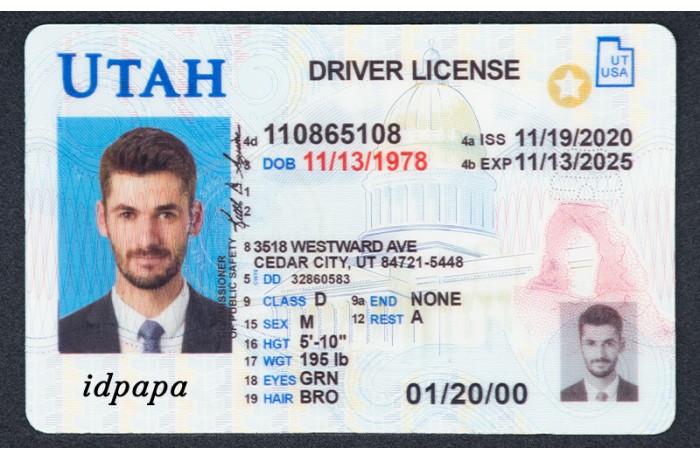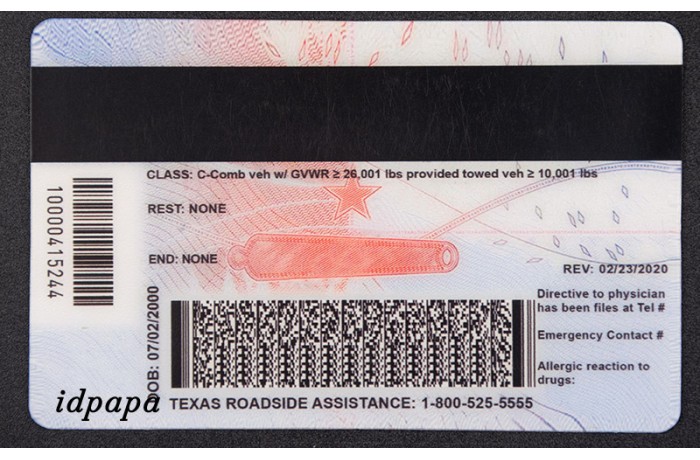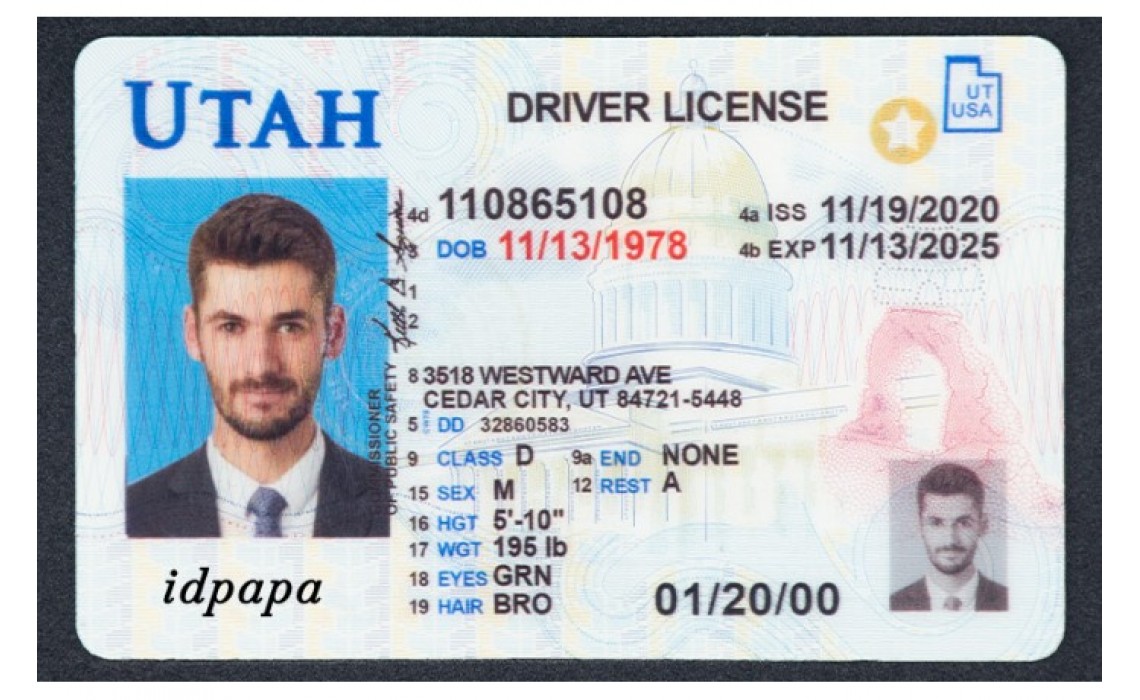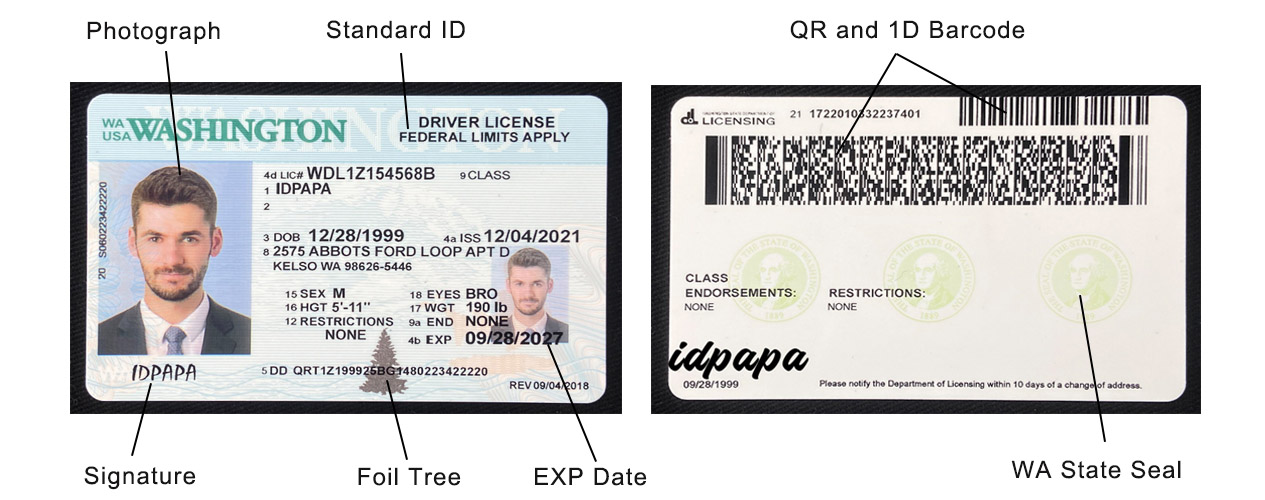A quick visual inspection can often reveal a low-quality fake. Here’s what cashiers should look for:
1. Font and Text Errors
●Fake IDs often use slightly incorrect fonts or spacing.
●Smudged or blurry printing is a common issue with counterfeit IDs.
●Look at the date of birth, license number, and expiration date—any misalignment is a red flag.
2. Hologram Quality and Placement
●Many states have holographic overlays that are difficult to duplicate.
●Fake holograms are often printed instead of embedded.
●Tilt the ID under light—if the hologram is missing or static, it’s likely fake.
3. Laminate and Texture Issues
●A real ID has a smooth, seamless finish.
●Some fakes use cheap laminated overlays, which can peel at the edges.
●Feel for raised or embossed text, which many states use as a security feature.
4. Mismatch Between Photo and Holder
●Compare the ID photo to the person’s face.
●Check hairline, facial structure, and eye color—many fakes use altered images.
●If the person avoids eye contact or appears nervous, it could be a sign of deception.
How Cashiers Use ID Scanners to Detect Fake IDs
Many modern stores use ID scanners to verify authenticity. Here’s how scanning helps:
1. Barcode Verification
●A valid ID has a properly encoded barcode.
●Scanners check if barcode data matches the printed info.
●If the barcode doesn’t scan or pulls up mismatched data, it’s likely a fake.
2. Cross-Checking Data with Store Systems
●Some scanners connect to databases to validate state-issued IDs.
●If an ID is not found in the system, it could be a counterfeit.
3. Scanning for UV and Infrared Features
●Many scanners use UV or infrared to detect embedded security features.
●If an ID fails to glow under UV light, it might be fake.
Common Mistakes Fake ID Users Make
Fake ID users often make simple mistakes that cashiers can catch:
1. Forgetting Basic ID Information
●Many users forget their fake birthdate or address.
●A cashier can casually ask, “What’s your zip code?”—hesitation can indicate a fake.
2. Using an Older Sibling’s ID
●Borrowing a sibling’s ID is one of the most common fake ID tricks.
●If the person doesn’t resemble the photo, ask for another form of ID.
3. Handing Over an Expired ID
●Some users don’t check the expiration date.
●Cashiers should always verify if the ID is valid and current.
4. Overconfidence or Nervousness
●Some users act too casually to avoid suspicion.
●Others fidget, avoid eye contact, or rush the interaction.
●Confidence should be natural—if it feels forced, ask follow-up questions.
State-Specific Security Features
Each U.S. state has unique security elements to help cashiers spot fakes. Here are some examples:
California
●Real ID bear and star visible under UV light.
●Holographic state seal overlay.
●Raised birthdate texture.
New York
●Transparent window with ghost image.
●Color-shifting ink for “NY” logo.
●Perforated state outline visible under light.
Florida
●UV-reactive “FL” pattern.
●Edge cutting technique for enhanced security.
●Signature must not be pixelated or off-center.
For cashiers, knowing these state-specific features makes it easier to detect fake IDs.
What to Do If You Suspect a Fake ID
If a cashier believes an ID is fake, they should follow store policy. Here’s what to do:
✅ Stay Calm and Professional – Don’t accuse the customer immediately.
✅ Ask Follow-Up Questions – Request a second form of ID or casually ask about their information.
✅ Use a Scanner or UV Light – If available, use technology to verify the ID.
✅ Decline the Sale If Unsure – If an ID seems suspicious, it’s best to refuse the transaction.
✅ Report to a Manager – If store policy requires it, inform a supervisor.
Conclusion:
Fake IDs are becoming more sophisticated, but cashiers can stay ahead by understanding security features, using ID scanners, and watching for suspicious behavior.
By following this guide, cashiers can quickly and confidently determine if an ID is fake, protecting their store from liability and ensuring compliance with age-restricted sales policies.
With practice, spotting a fake ID becomes second nature, making transactions smoother and reducing the risk of fraudulent sales.





